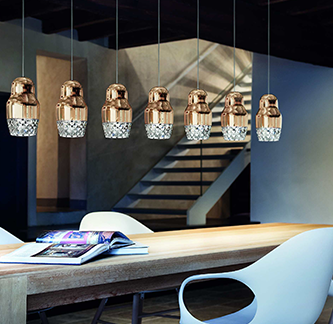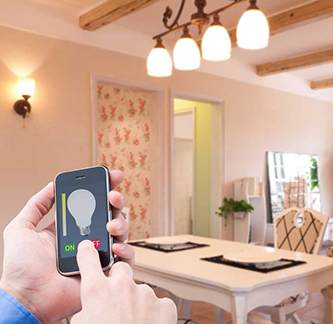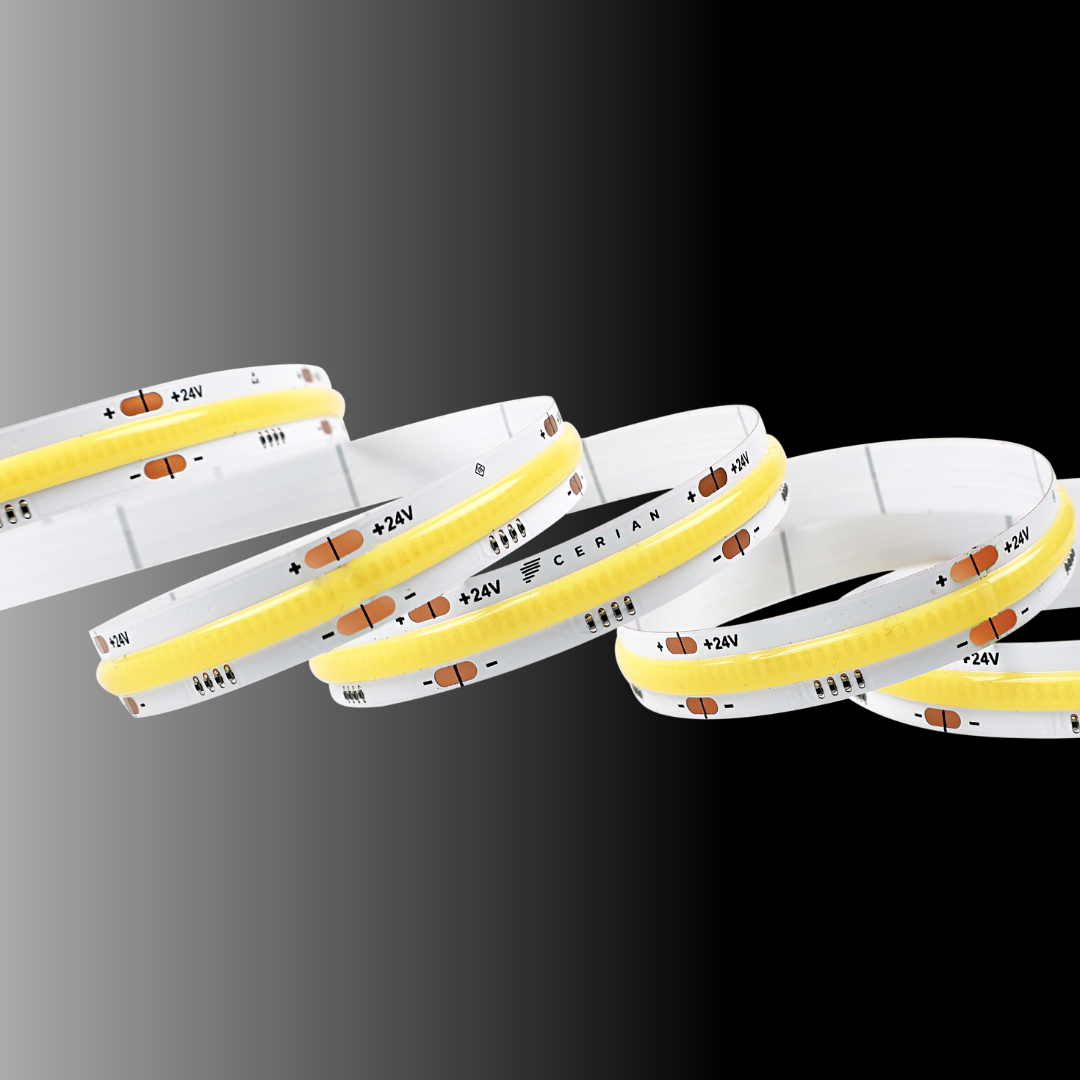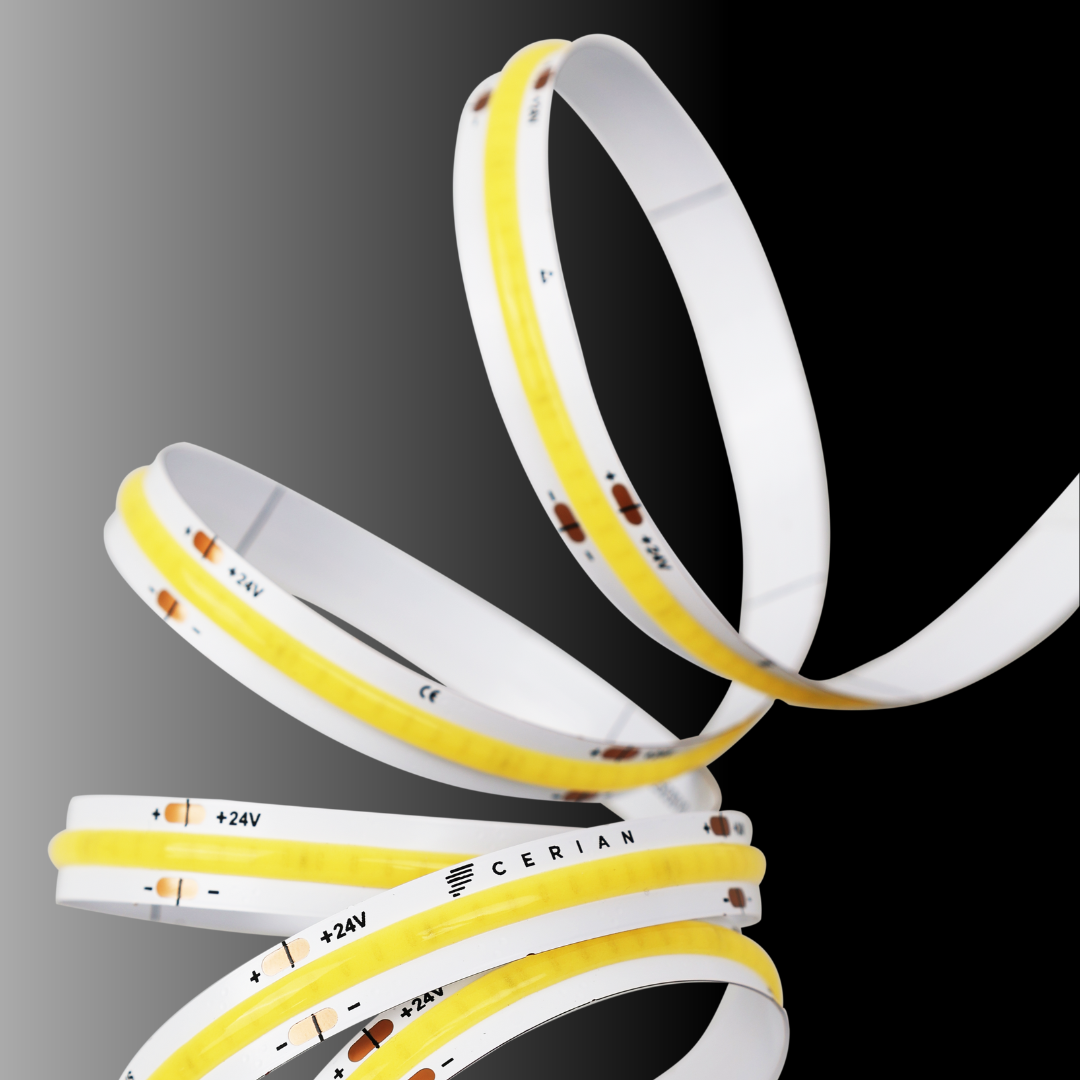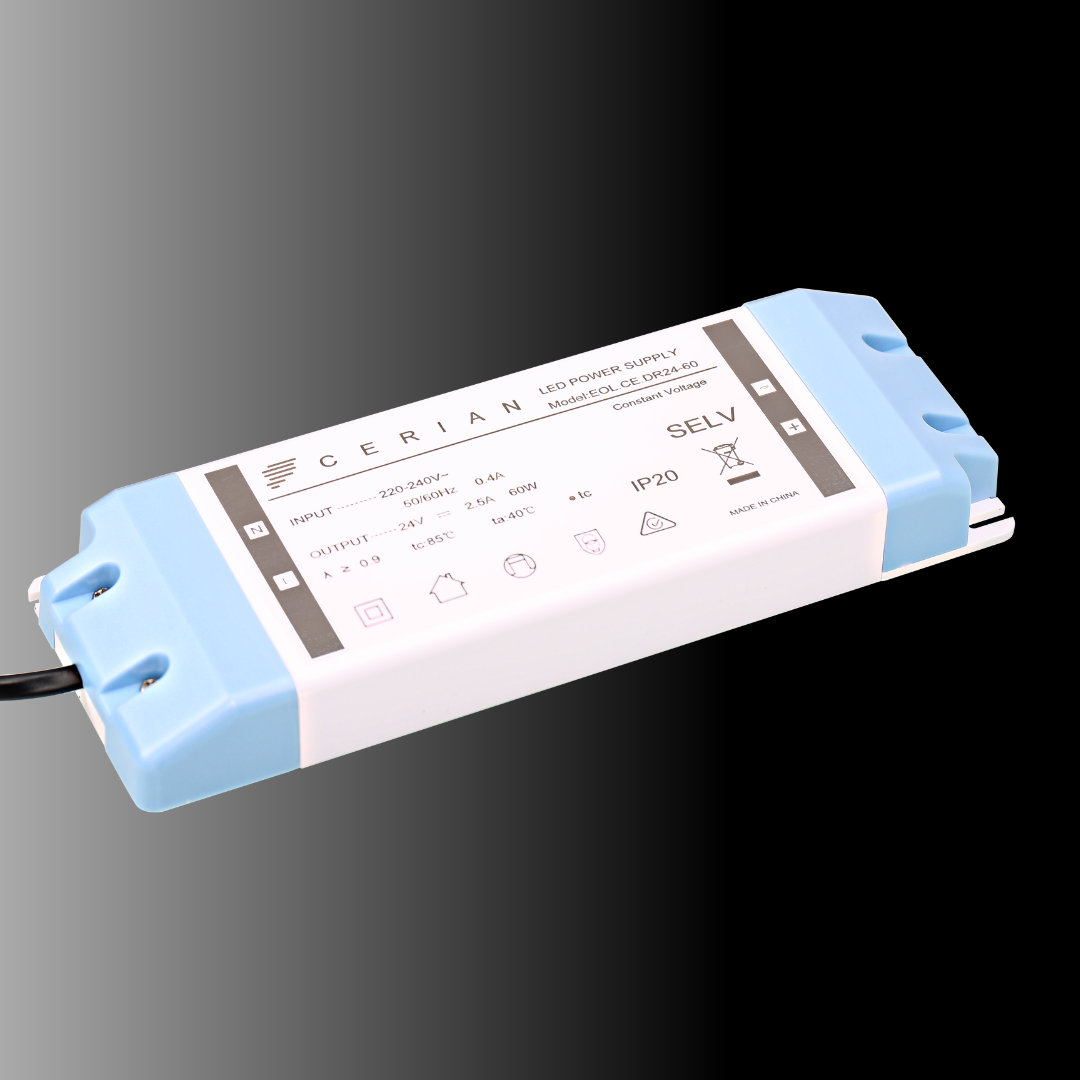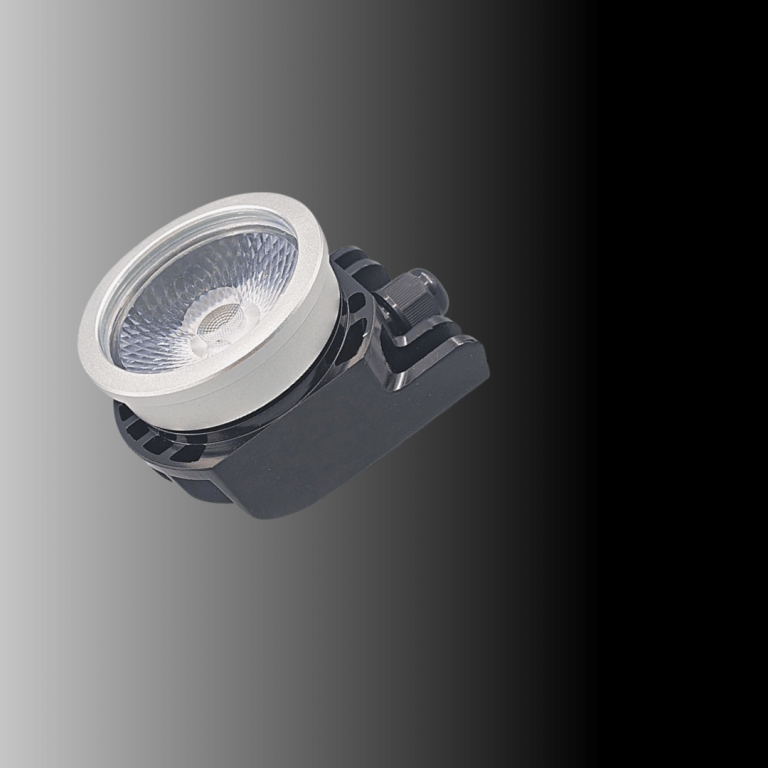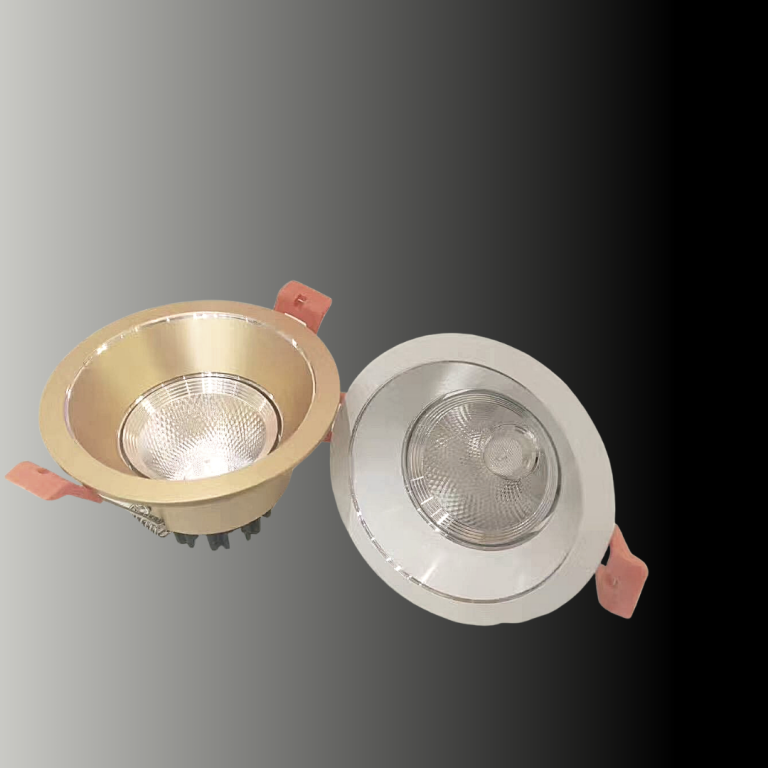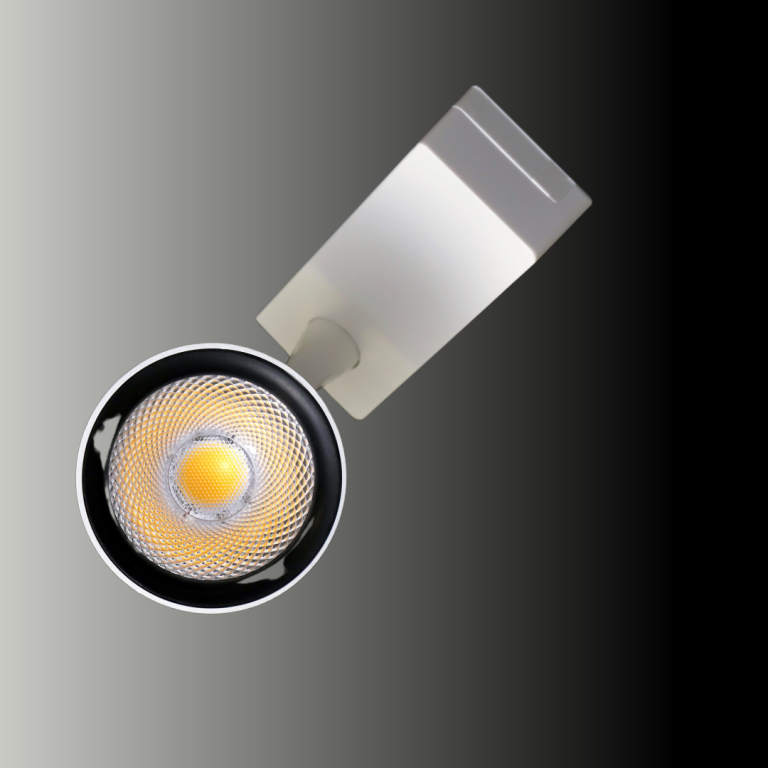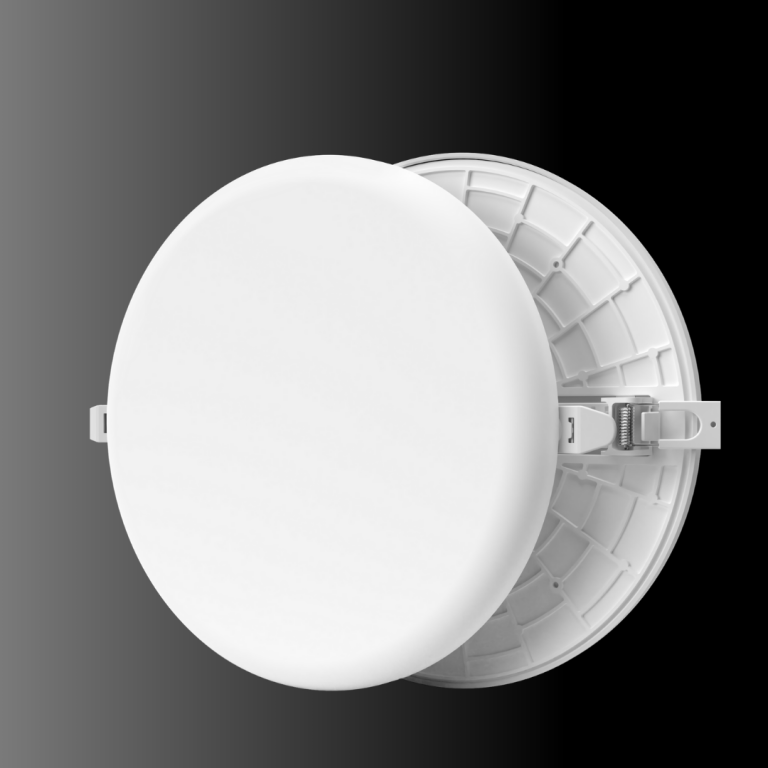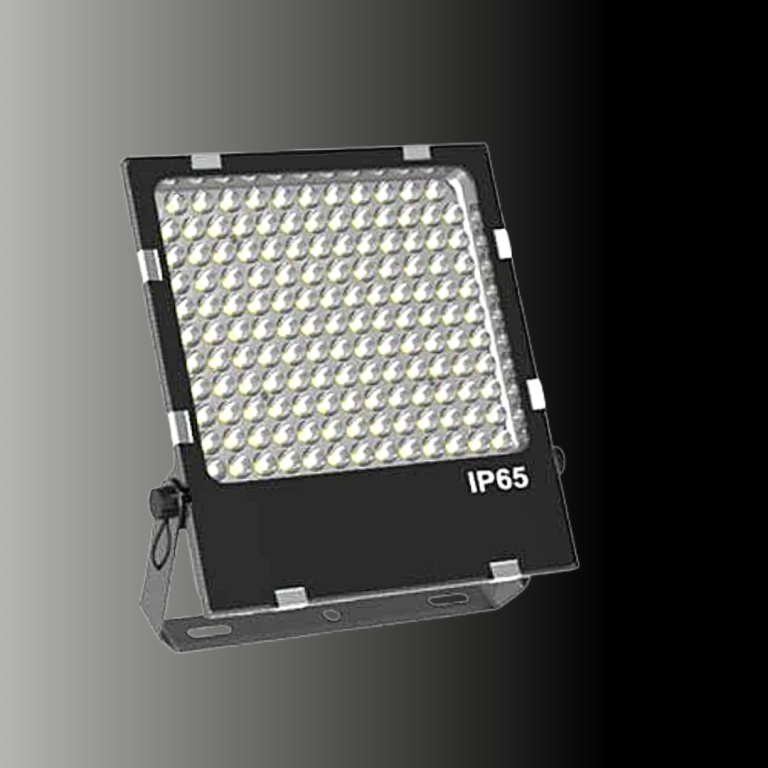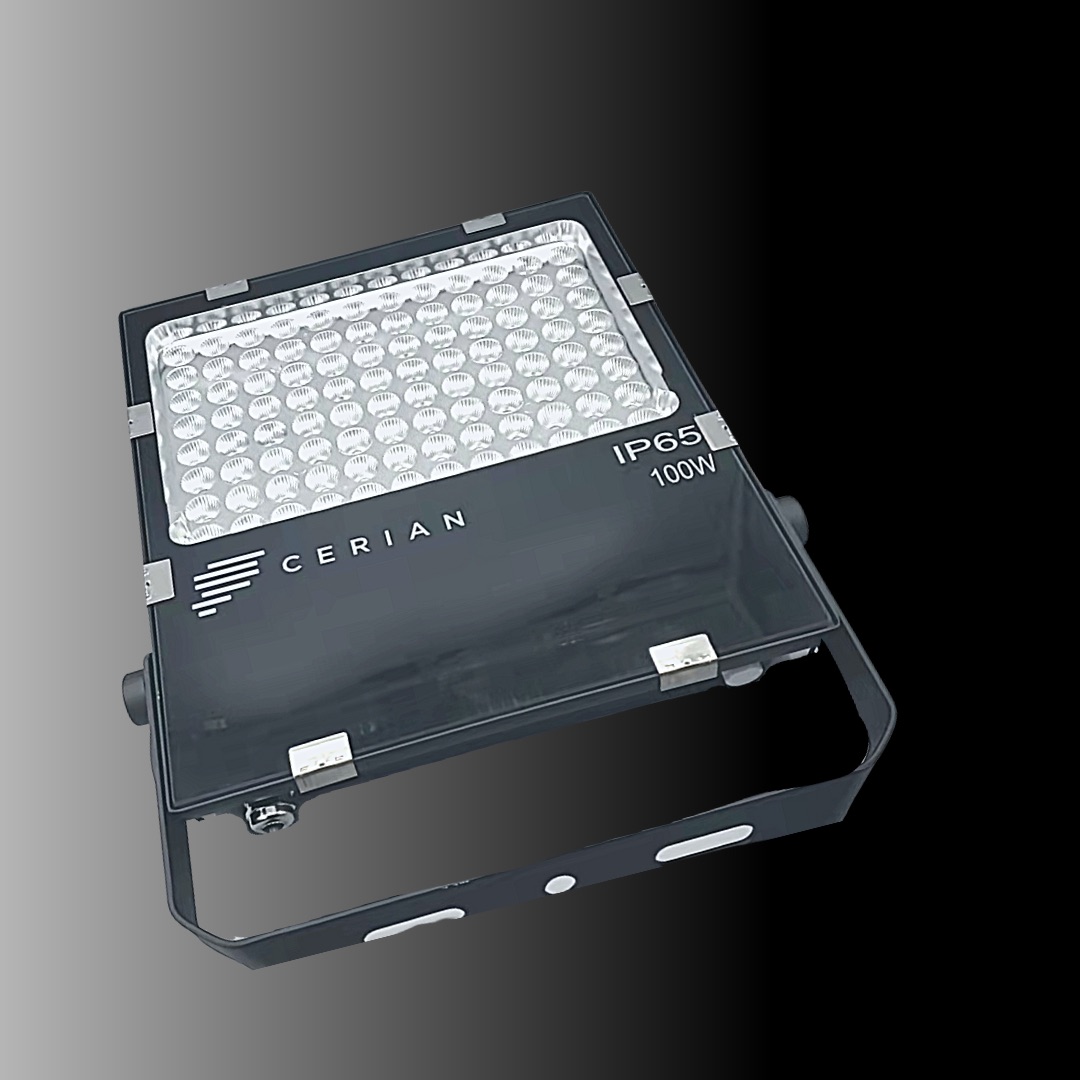Featured Products

- 80% More Energy Saved

- High Energy Efficiency

- 3 Years Warranty

- Long Life Span
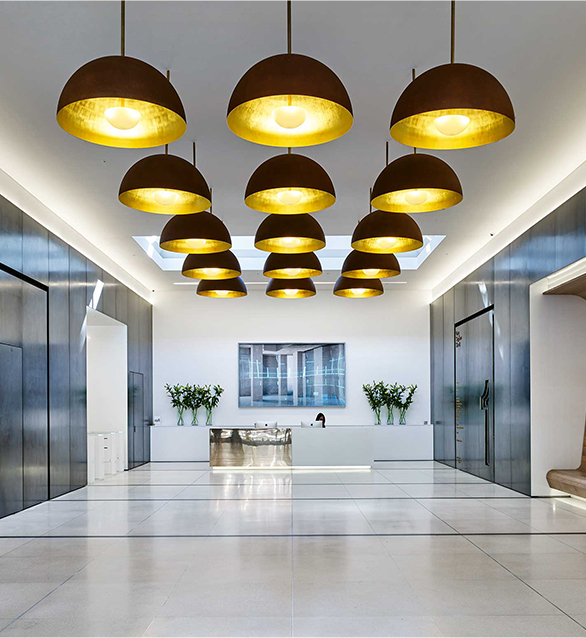
About Us
Cerian is an Australian company devoted to crafting visually stunning and energy-efficient spaces. Our experts specialise in creating indoor, outdoor, and intelligent lighting solutions. Whether you are an LED lighting retailer, wholesaler, e-commerce store owner, Cerian is your one-stop shop for all things lighting-related.


From The Blog
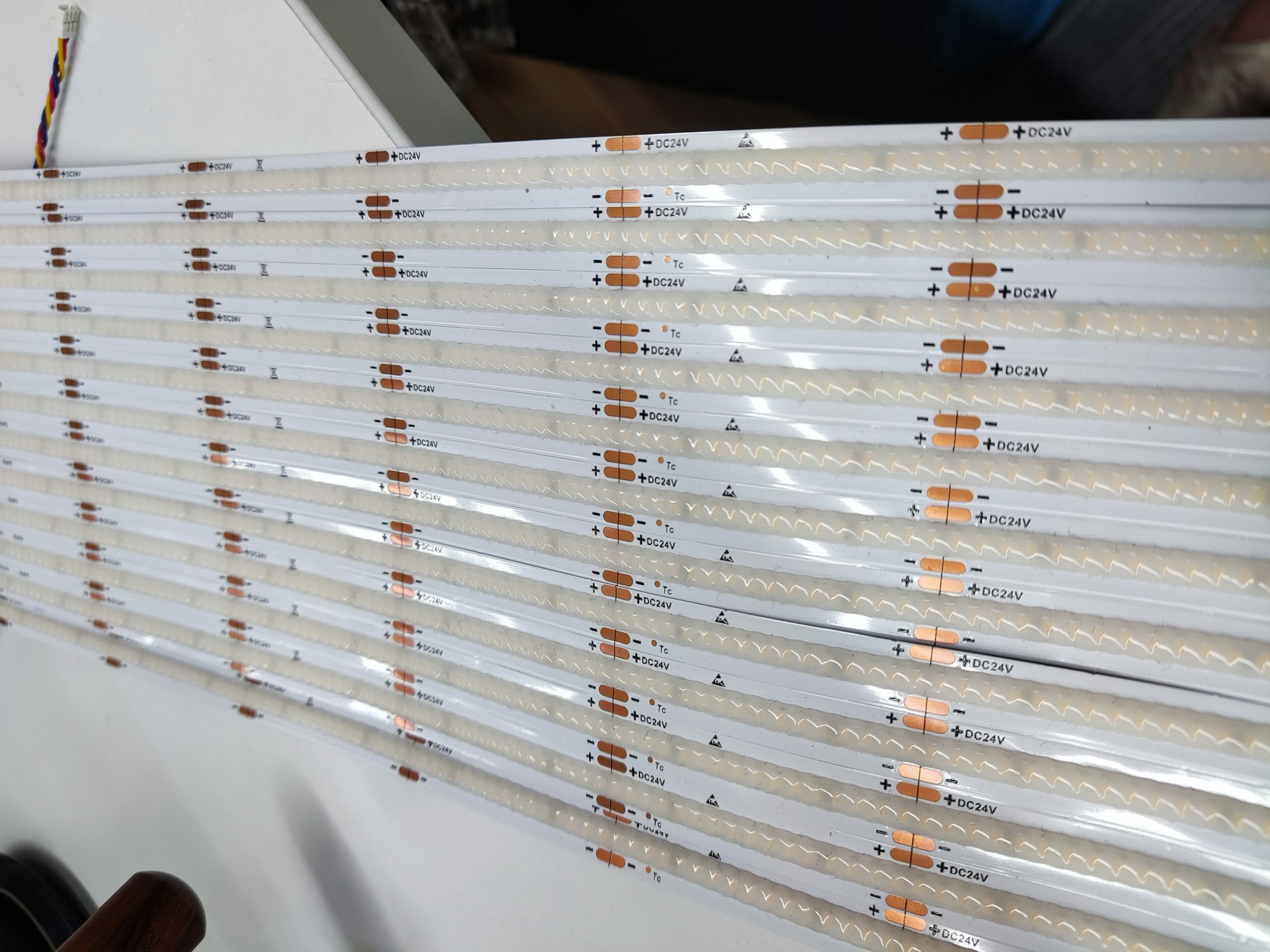
09May
CSP LED Strip Light
The CSP LED strip has emerged as a top option for both residential and commercial applications in the quickly evolving field of LED lighting. You will gain a thorough understanding of the benefits, functions, and uses of CSP LED strips from this in-depth guide, enabling you to choose the ideal lighting solution for your requirements with confidence. Come along as we explore the world of CSP LED strips and learn how they can change the way you experience lighting.
[video width="640" height="368" mp4="https://www.cerian.com.au/wp-content/uploads/2023/02/2929_1670555276.mp4"][/video]
What is a CSP LED strip?
CSP LEDs, which are small and very efficient light-emitting diodes, are used in CSP LED strips, a sort of flexible lighting solution. These LEDs have a translucent, milky-white silicone covering and are mounted to a flexible printed circuit board (PCB). In comparison to conventional LED packages, CSP LEDs have lower thermal resistance, fewer heat transfer paths, and higher reliability due to their compact size and integrated design. CSP LED strips' high performance makes them more and more popular for usage in a range of lighting applications, including those for residential, commercial, and architectural projects.
The benefits of using CSP LED strips
CSP LED strips are a good choice for a variety of lighting applications because they provide a number of advantages. Several of these benefits include:
CSP LEDs are more energy-efficient and have a greater light output than conventional LED packages. Better light transmittance from their translucent silicone covering results in greater brightness.
Due to its accurate binning technique, CSP LED strips provide better colour constancy as it assures constant colour temperature and less colour variance throughout the strip.
The high-density LED arrangement on the strip is made possible by the tiny size of CSP LEDs, allowing for a more streamlined and compact design. Because of this, CSP LED strips are excellent for use in small areas or complex lighting setups.
The number of possible failure spots is decreased by the fact that CSP LEDs do not require soldering gold wire connections. As a result, the LED strip is more durable and has a longer lifespan.
CSP LED strips are a cost-effective and user-friendly lighting option since they can be cut to length and simply fitted in a variety of areas.
CSP LED strips can be utilised for accent, task, or ambient lighting in a variety of projects, including residential, commercial, and architectural lighting. This is because of their high-performance qualities
In summary, CSP LED strips offer numerous benefits, such as
They are a popular option for contemporary lighting solutions because to their excellent luminous efficiency, improved colour constancy, compact design, increased durability, and adaptability.
Applications of CSP LED strips
Domestic Lighting
Kitchen and bathroom under-cabinet lighting with CSP LED strips provides sharp, concentrated illumination for workplaces and counters to improve visibility and safety.
Living room and bedroom cove lighting and accent lighting: Adding a warm, ambient glow to create a cosy and welcoming ambience.
Lighting for your stairs and hallways ensures your safety while enhancing the interior style of your house.
Industrial Lighting
Lighting for display cases and shelves in retail establishments: Highlighting goods with vivid, consistent illumination to draw people and increase sales.
Providing effective and comfortable lighting for workplaces in offices and workshops may increase productivity. Architectural lighting for hotels, restaurants, and bars: Enhancing the ambiance and visual appeal of commercial spaces to create memorable experiences for guests.
Landscape and Outdoor Lighting
Adding visual interest and kerb appeal while guiding guests securely through outdoor spaces is achieved with pathway and step lights.
Creating a comfortable and engaging setting for outdoor meetings and entertainment with patio, deck, and poolside lights.
Garden & landscape feature lighting: Showcasing the finer points of landscape designs and bringing out the beauty of your green spaces. Signage and Advertising
Illuminated billboards and signs: Increasing visibility and emphasising your message or brand.
Enhancing the effect of business identities and marketing materials through logo and branding backlighting.
Ensure that your goods and services stand out in congested event venues with exhibition and trade show displays.
Marine and Automotive Lighting
Interior and exterior vehicle lighting: Increasing road safety and visibility while giving your car a little more personality.
Enhancing the visual appeal and practicality of marine vessels for a pleasurable time on the water with accent and decorative lighting for yachts and boats.
Entertainment and Stage Lighting
Lighting for performances, concerts, and events: Creating captivating visual effects that captivate audiences.
For patrons and partygoers, special effects and mood lighting in clubs and entertainment venues provide immersive and unforgettable experiences.
Due to their adaptability and versatility, CSP LED strips may be used in a variety of locations and for a wide range of purposes. They are the perfect option for both business and personal usage because of their great efficiency, dependability, and colour constancy.
Knowledge about CSP LED Technology
The Chip Scale Package, or CSP, is a cutting-edge packaging innovation that has had a big influence on the LED market. We shall examine how CSP technology improves LED strips in the information that follows and contrast CSP LED strips with other LED technologies.
Chip Scale Package (CSP) is a cutting-edge packaging technique used in the production of LEDs and integrated circuits. Due to its various benefits, CSP—which was created in 1994 by Japan's Mitsubishi Corporation—has subsequently gained popularity as a component for many electronic applications.
CSP technique describes a packaging method where the package's size is kept to no more than 20% of the semiconductor chip's actual size. Electronic equipment that are more integrated and miniaturised may be made smaller, lighter, and more effective thanks to this compact package design.
CSP technology in the LED sector uses wire flip-chip procedures without the usage of gold. In this method, the pole pad on the PCB board is used to directly bond the blue LED chip to the board. Fluorescent adhesive is then applied to the chip's surface, covering the LED. Traditional wire bonding and brackets, which are frequently used in Surface Mounted Device (SMD) LED packages, are no longer required
The benefits of CSP technology for LED strips
For LED strips, CSP technology offers a variety of advantages. These benefits consist of:
Greater luminous efficiency: CSP LED strips have a higher light output per watt thanks to their compact packaging and reduced heat transfer paths.
Better colour consistency is possible with CSP LED strips thanks to their 3-step Macadam colour tolerance, which guarantees better colour consistency all along the strip.
Enhanced reliability: Since CSP LEDs do not require solder wire connections, there are fewer potential failure spots.
Compact design: Because CSP LEDs are so compact, they may have higher LED densities, which makes lighting applications more adaptable and diverse.
Comparing CSP LED strips to other LED technologies
There are a variety of technologies available for LED strips. COB (Chip on Board) and SMD (Surface Mounted Device) LED strips are two common substitutes for CSP LED strips. Understanding the distinctions between each of these technologies will help you make an informed choice for your lighting needs. Each of these technologies has its own set of benefits and drawbacks.
COB LED vs. CSP LED Strip
High-quality lighting solutions are provided by both CSP and COB LED strips, although they have some key differences. Due to their small package design, CSP LED strips provide superior colour constancy and greater light efficiency, whilst COB LED strips excel in light uniformity. Most of the time, the particular needs will determine whether to use CSP or COB LED strips.
CSP LED Strip VS SMD LED Strip
Although CSP and SMD LED strips are both well-liked options for a variety of applications, there are some key differences between them, including size, heat dissipation, colour consistency, and application flexibility. CSP LED strips are more adaptable and offer higher colour constancy than SMD LED strips because to their small size and enhanced heat dissipation. SMD LED strips, on the other hand, have been a dependable option for many years and are still employed in a variety of lighting applications. In the end, the choice between CSP and SMD LED strips will be determined by the particular needs and limitations of your project.
CSP LED strips are superior to competing LED technologies in several ways, including enhanced dependability, better colour uniformity, and higher light efficiency. They are a great option for a variety of lighting applications, including those in industrial, commercial, and residential settings.
Different types of CSP LED strips are available to meet different lighting requirements and applications. Let's examine the many CSP LED strip varieties that are sold now.
Warm white, cold white, or any other solid colour like red, green, or blue are all examples of single-color CSP LED strips' output. These strips are ideal for accent lighting or for setting a certain mood. Single colour CSP LED strips are an accessible and well-liked option for many residential and commercial applications because to their simplicity.
Users of tuneable white CSP LED strips can modify the colour temperature of the white light the strip emits. With the help of these strips, you may alter the colour temperature of white to any shade between warm and cool. To create dynamic lighting situations that can be tailored to a particular mood or function, such as task lighting or relaxation, tuneable white LED strips are excellent.
Red, green, and blue LEDs are used in RGB CSP LED strips to provide a variety of colours. More colour options and better white light performance are made possible by the addition of a white LED in RGBW CSP LED strips. These LED strips are ideal for adding accent lighting, mood lighting, or dynamic lighting to any room.
Digital LED strips or pixel LED strips, also known as addressable CSP LED strips, enable individual control of each LED in the strip. This makes it possible to produce complex colour patterns, animations, and effects. For interactive displays, stage lighting, and other artistic uses that call for fine control and customization, addressable CSP LED strips are ideal.
Standard LED strips have fewer visible light spots and less LEDs per square metre or foot than high-density CSP LED strips, which have more LEDs per square metre or foot. These strips are perfect for uses like under-cabinet lighting, cove lighting, or backlighting translucent surfaces where a clean, uninterrupted stream of light is needed. High-density CSP LED strips are appropriate for more demanding applications since they frequently have better heat dissipation and more light output.
When choosing a CSP LED strip, it's crucial to take into account a number of essential features and specifications that can have a significant impact on the product's performance, quality, and longevity. The following are some essential considerations:
Luminous efficacy is the ratio of light output (lumens) to electrical power consumption (watts). The LED strip is more energy-efficient and generates more light with less power when it has a greater luminous effectiveness. To achieve the highest light output for your energy use, pick a CSP LED strip with a greater luminous effectiveness when comparing different models.
How well an LED light source portrays colours in comparison to natural daylight is determined by the Colour Rendering Index (CRI), which is measured on a scale from 0 to 100. For situations where correct colour representation is critical, such as in art galleries, shop displays, or photographic studios, a higher CRI score suggests better colour rendering. Attempt to find CSP LED strips with a CRI of at least 80 for general use, and 90 or higher for applications that require exceptional colour accuracy.
An LED strip's level of defence against dust and water incursion is graded using the Ingress Protection (IP) rating system, which is standardised. The IP rating has two numbers, the first of which represents the degree of protection against solids (such as dust), and the second of which represents the degree of protection against liquids (such as water). For instance, an LED strip with an IP65 rating can withstand low-pressure water jets and is dust tight. Based on the planned installation environment and exposure to moisture or dust, choose a CSP LED strip with the suitable IP certification.
A CSP LED strip's durability and dependability are crucial considerations since they might affect the total cost of ownership and maintenance. In the long term, LED strips with longer lifespans and higher dependability are more cost-effective since they need less frequent repair or upkeep. Look for items that have completed stringent testing, including as thermal shock, distortion, and temperature cycling tests, to be sure you're obtaining a high-quality CSP LED strip. Consider the manufacturer's warranty and support as well to make sure you're covered in case the device has any problems.
Given the variety of options available, choosing the ideal CSP LED strip for your project can be challenging. Consider the following factors to make the best decision possible:
Knowing what kind of lighting you need
Understanding your lighting needs is crucial before choosing a CSP LED strip. Think about things like the required brightness, colour rendering, colour temperature, and beam angle. Consider the installation environment, particularly any potential exposure to moisture, dust, and extremely high or low temperatures since these elements can affect the performance and durability of the LED strip.
Examining available power and voltage options
The power and voltage specifications of your project should be considered when choosing a CSP LED strip. Most LED strips come in 12V or 24V varieties, with the latter being more energy-efficient and better suited for longer runs without noticeable voltage drop. Use the proper power supply and make sure it can handle the total wattage the LED strip requires. To guarantee a secure and reliable installation, consider any power-related safety measures, such as utilising the right cables, connections, and drivers.
| Feature | CSP LED Strip | COB LED Strip |
| Appearance | Translucent milky white glue | Yellow glue mixed with phosphor |
| Color Tolerance | 3-step Macadam | 5-step Macadam |
| Light Efficiency | Higher light efficiency | Lower light efficiency |
| Light Uniformity | Less uniform, may show light spots | More uniform, no light spot effect |
| Light Color | No yellow light on the edge, soft light | Yellow light on the edge |
| Beam Angle | 180 degrees | 180 degrees |
| Attribute | CSP LED Strip | SMD LED Strip |
| Size | Smaller, more compact | Larger, less compact |
| Heat Dissipation | Better heat dissipation | Inferior heat dissipation |
| Color Consistency | 3-step Macadam | 3-step Macadam |
| Light Uniformity | High density, less hot spot | Lower density, more hot spot |
| Application Flexibility | More versatile and flexible | Less versatile and flexible |
| Beam Angle | 180 degree | 120 degree |
- tools and supplies required
- Gather all the required equipment and materials before beginning the installation, including:
- Select a CSP LED strip
- A compatible LED driver or power supply
- Depending on the kind of strip, mounting clips or an adhesive backing
- (If necessary) connectors or soldering supplies
- Electrical tape and wire strippers
- A pencil or marker and a measuring tape
- Calculate the LED strip's wattage per metre (typically given by the manufacturer).
- Determine the strip's overall length before installation.
- To get the overall amount of power needed, multiply the watts per metre by the complete length.
- Increase the overall wattage by 20% to accommodate for any power fluctuations or losses.
- To guarantee safe and effective operation, select a power source with a wattage rating that meets or exceeds the calculated power requirements.
- For the LED strip and power supply, use cables and connections of the proper size.
- Avoid using a power supply with inadequate wattage or overloading it with too many LED strips connected.
- Put in a proper circuit breaker or fuse to guard against any electrical overloads and short circuits that might damage the LED strip and power supply.
- During the installation procedure, abide by all local electrical standards and safety requirements.
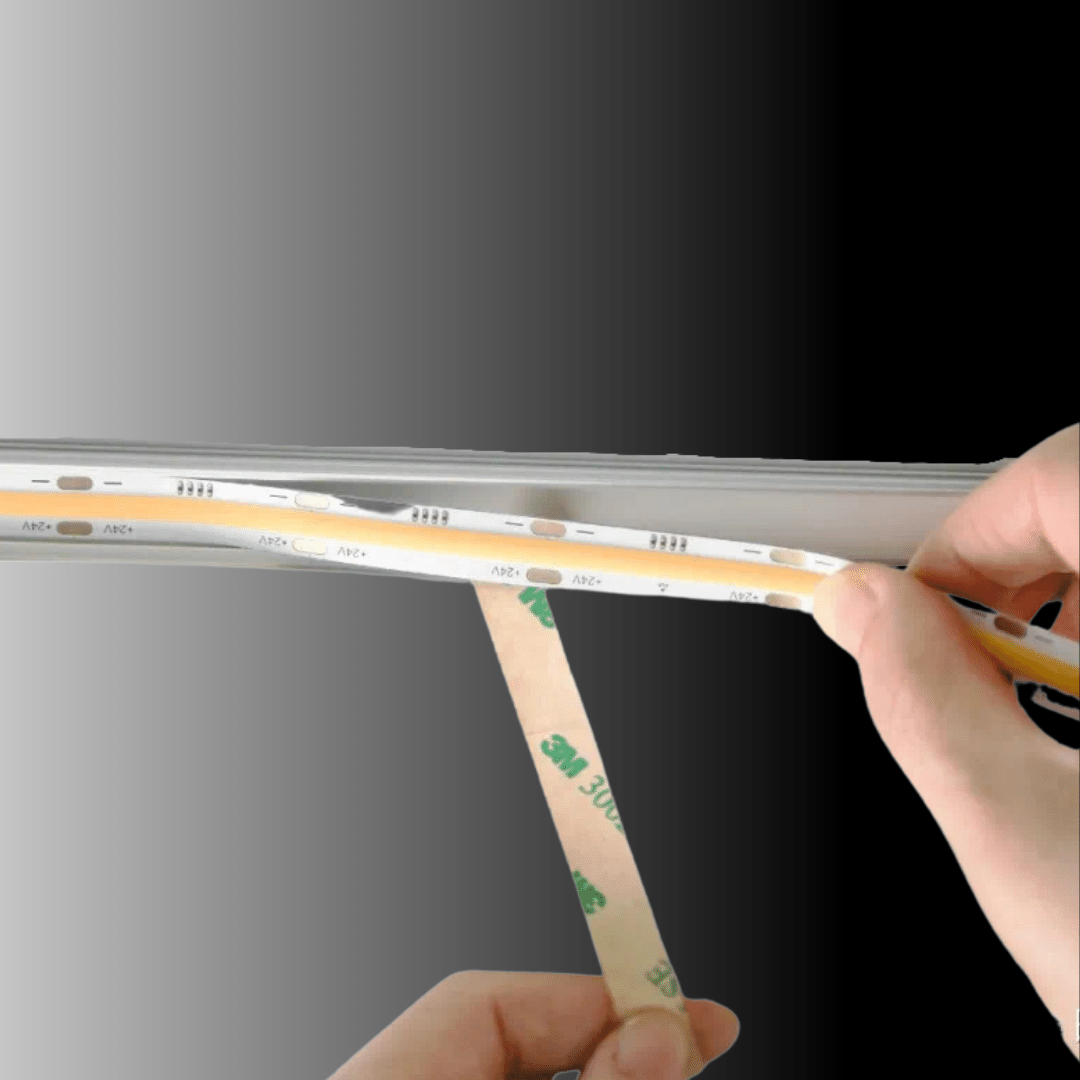
09May
Mistakes when Installing LED Strip Lighting
Thanks to their energy efficiency, flexibility, and adaptability, LED strip lights have become a popular choice for various lighting applications like task lighting, accent lighting, and ambient lighting. However, installing these lights can be challenging, and mistakes during installation can result in poor performance, reduced lifespan, and even safety hazards. This comprehensive guide will discuss 10 common mistakes to avoid when installing LED strip lighting, ensuring a smooth and efficient installation process.
1: Selecting the Wrong Type of LED Strip Lighting
The first mistake many people make when installing LED strip lighting is choosing the wrong type of strip. With various LED strip lighting options available, each with unique features and specifications, choosing the right strip that meets your specific lighting needs is essential. Consider indoor or outdoor use, brightness levels, and colour temperature before selecting.
2: Using an Inappropriate Power Supply
Another frequent mistake is using an incompatible power supply for LED strip lighting. Choosing a power supply that can accommodate the voltage and wattage requirements of your LED strip lights is crucial, as using an unsuitable power supply can damage the lighting system and pose safety risks.
3: Neglecting to Use Proper Connectors
Using appropriate connectors is essential for ensuring the proper functioning of your LED strip lighting. When installing LED strips, it’s crucial to use connectors specifically designed for LED strip lights, guaranteeing correct and secure connections.
4: Failing to Measure Accurately
Taking precise measurements ensures your LED strip lighting fits perfectly in your space. Mistakes during the measuring process are common, so double-check your measurements before cutting your LED strip lights.
5: Cutting LED Strip Lighting Incorrectly
Improper cutting of LED strips can damage the lighting system and negatively impact performance. Ensure you cut your LED strips at the designated cut points to avoid issues.
6: Inadequate Mounting of LED Strip Lighting
Proper mounting is vital for the performance and longevity of your LED strip lighting. Use the correct adhesive or mounting brackets specifically designed for LED strip lights, and make sure they are securely attached.
7: Overlooking Environmental Factors
When installing LED strip lighting, it’s essential to consider the environment in which the lights will be used. Select the appropriate type of strip lighting for specific conditions, such as waterproof LED strips for outdoor or humid environments.
8: Ignoring Dimming and Control Options
Another common oversight is not considering dimming and control options for your LED strip lighting. Adding a dimming feature or selecting a strip lighting system with built-in controls can significantly enhance the versatility and usability of your lighting installation.
9: Compromising on Quality Accessories
Investing in high-quality accessories, such as power supplies, connectors, and mounting brackets, is essential for the performance and lifespan of your LED strip lighting. Avoid the temptation to save money by choosing low-quality accessories, which can lead to poor performance and potential safety hazards.
10: Not Seeking Professional Assistance When Necessary
If you need more certainty about any aspect of your LED strip lighting installation, feel free to consult a professional. A qualified electrician or lighting expert can provide valuable advice and ensure your installation is safe and efficient.
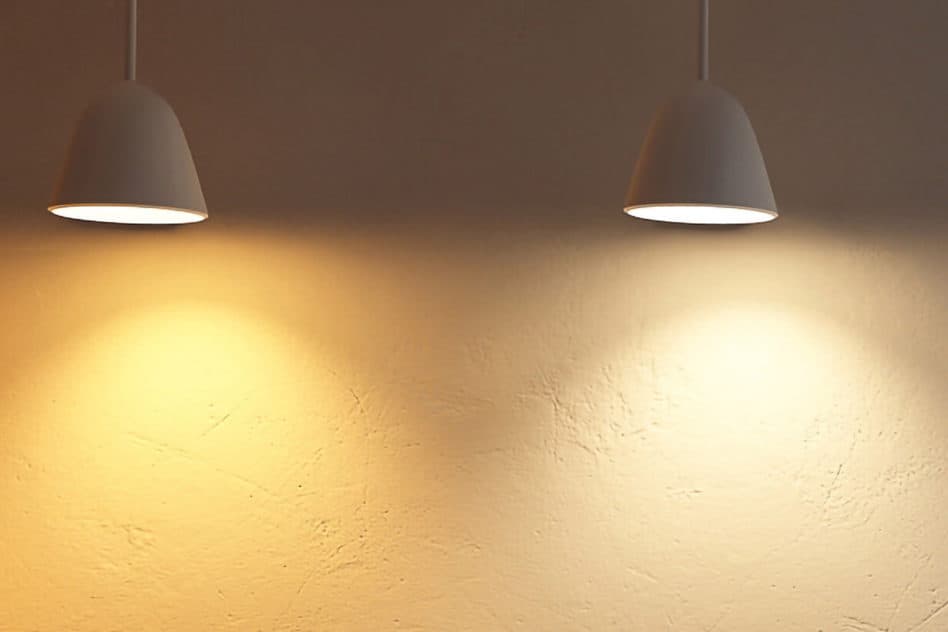
09May
2700K vs 5000K: What’s the Difference
Colour temperature plays a crucial role in determining the ambience and functionality of your space and knowing the differences between color temperatures like 2700K and 5000K is essential for making the right lighting choices.
The key difference between 2700K and 5000K is that 2700K produces a warm, yellowish light ideal for cosy and intimate spaces, while 5000K emits a cool, bluish-white light suitable for task-oriented areas or workspaces.
In this article, we’ll delve deeper into the science of colour temperature, compare 2700K and 5000K lights in detail, and offer guidance on selecting the best colour temperature for your needs
Understanding Colour Temperature
colour temperature is a measure of the colour characteristics of light, expressed in degrees Kelvin (K). It indicates the hue of a light source, ranging from warm (lower Kelvin values) to cool (higher Kelvin values).
The Kelvin scales
The Kelvin scale is a temperature scale used to describe the colour temperature of light. The scale starts at 0K (absolute zero) and has no upper limit. In lighting, colour temperatures typically range from 1000K to 10,000K.
Colour temperature plays a crucial role in lighting design, affecting the appearance of a space, the colour rendition of objects, and even human mood and behaviour.
Black body radiation
Colour temperature is based on the concept of black body radiation. A black body is an idealized object that absorbs all incident light and emits radiation as it is heated. The colour of the emitted light changes as the black body gets hotter, shifting from red to orange, yellow, white, and blue.
Emission spectrum of light sources
Different light sources have different emission spectra, which determine their colour temperature. Incandescent bulbs, for example, have a continuous spectrum that closely resembles the black body radiation curve, while fluorescent and LED lights have more complex spectra.
The impact of colour temperature on light quality
Colour temperature affects the appearance of illuminated objects, influencing colour rendering, contrast, and visual comfort. It can also impact human well-being, affecting mood, alertness, and sleep quality
Exploring 2700K
2700K light has a warm, yellowish-white colour, like the glow of a traditional incandescent bulb. It creates a cosy and intimate atmosphere, enhancing feelings of relaxation and comfort.
Applications of 2700K lighting
Understanding the differences between 2700K and 5000K can help you choose the right colour temperature for your specific lighting needs and create the desired atmosphere in your space.
The most apparent difference between 2700K and 5000K light is their colour: 2700K emits a warm, yellowish-white light, while 5000K produces a cool, bluish-white light. The choice between the two depends on the desired atmosphere and visual impact in a space.
Colour temperature can influence mood and behaviour. 2700K light promotes relaxation and comfort, making it suitable for living spaces and bedrooms. In contrast, 5000K light stimulates alertness and focus, making it ideal for work environments and task lighting.
Generally, there is no significant difference in energy efficiency between 2700K and 5000K LED bulbs. However, because 5000K light is often perceived as brighter, you may be able to use fewer or lower-wattage bulbs to achieve the same level of illumination.
Choosing the Right Colour Temperature
The ideal colour temperature depends on the specific needs and preferences of the space. Consider the purpose of the room, the desired atmosphere, and any specific tasks that require optimal lighting conditions.
Larger spaces may benefit from cooler, brighter lighting (5000K) to ensure even illumination, while smaller rooms might feel cosier with warmer lighting (2700K).
Consider how the colour temperature of your lighting will interact with the colours in your space. Warm lighting (2700K) complements warm-toned interiors, while cool lighting (5000K) works well with cooler colour schemes.
Choose a colour temperature that supports the primary activities in the room, whether it’s relaxation, focus, or visibility.
Creative lighting techniques
Layered lighting, which combines ambient, task, and accent lighting, allows you to incorporate different colour temperatures for different purposes. For example, use 2700K for ambient lighting and 5000K for task lighting in a home office.
When mixing colour temperatures, be mindful of potential issues like colour clashing and uneven illumination. Ensure that the combination of colour temperatures is visually harmonious and serves the intended purpose.
Advantages of LED lighting
LED lights offer numerous benefits, including energy efficiency, long lifespan, and minimal heat output. They also provide a wide range of colour temperatures, making it easy to find the perfect lighting solution for your needs.
Tuneable white LED technology
allow you to adjust the colour temperature of your lighting, providing greater flexibility and customization. This technology can be particularly useful in spaces where lighting needs change throughout the day or depending on the activity.
Understanding the differences between 2700K and 5000K colour temperatures is crucial for creating the perfect lighting atmosphere in your space. Consider the desired ambiance, functionality, and personal preferences when choosing between these colour temperatures.
Proper lighting can significantly impact the look and feel of your space, as well as your overall well-being and productivity. By selecting the appropriate colour temperature for your needs, you can enhance your environment and create a more enjoyable experience.
Don’t be afraid to experiment with different colour temperatures and lighting techniques to find the perfect balance for your space. Mixing 2700K and 5000K lighting, utilizing tuneable white LED technology, and layering different colour temperatures can help you create a dynamic and customized lighting solution that suits your unique needs and preferences.
- 2700K is a popular choice for residential lighting, particularly in living rooms, bedrooms, and dining areas, where a warm, inviting ambiance is desired.
- Hotels, restaurants, and bars often use 2700K lighting to create a welcoming and soothing environment for their guests.
- 2700K light can enhance the appearance of artwork, especially warm-toned pieces, by providing a natural, flattering illumination.
- Offices, retail stores, and other commercial spaces often use 5000K lighting to promote alertness and productivity.
- 5000K is an excellent choice for outdoor lighting, as it provides clear visibility and closely mimics natural daylight.
- The cool, bright light of 5000K bulbs is ideal for task lighting, such as in workspaces, kitchens, and garages, where detailed work and high visibility are required.
| Aspect | 2700K (Warm White) | 5000K (Cool White) |
| Appearance | Yellowish, warm light | Bluish-white, cool light |
| Ambience | Cosy, intimate, and inviting | Bright, crisp, and energizing |
| Ideal Applications | Residential lighting, hospitality, and art galleries | Commercial spaces, outdoor lighting, and task lighting |
| Psychological Effects | Calming, relaxing, and comfortable | Stimulating, alertness, and productivity |
| Energy Efficiency | Slightly lower efficiency | Slightly higher efficiency |









